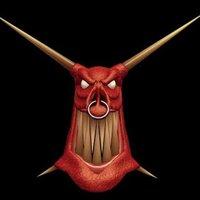Zipster:
Thanks for your reply.
Well, I had already tried inverting all the Z components of the reference model before, but it didn't work. As you said, I'm gonna check the Half-Life 2 SDK for the source code.
---
Let
v denote the vertex position in the reference model space, and let M denote the bone-to-world transformation matrix, then the skinned vertex position
v' is given by:

As previously noted, I can correctly calculate the
v' in case of reference postures at this point. However, the problem occurs when it comes to animations. So, I am narrowing down the cause of the problem into the bone-to-world transformation matrix M of the animation keyframes.
And I have figured out that the bones used for animations are rotated 90 degrees around Y axis of the reference model space. It's really strange and I think the problem may be related to that.
[Edited by - slang on January 29, 2006 6:14:47 AM]

 As you can see in the screenshots above, at this point right now, I can correctly render SMD reference models (and construct bone hierarchies, also). However, what I am suffering is this:
http://www.quake4.jp/slang/files/videos/flx_hl2_mdl_01.m1v
The model in the video is CPU-skinned and I am also implementing GPU skinning simultaneously, but the buggy behaviors are the same in both cases (I am using OpenGL and GLSL, by the way). Hence I suspect that the bone transformations are the problem, maybe relating to DirectX's left-handed coordinate system and OpenGL's right-handed coordinate system, but I am at a loss what I should do.
Any ideas?
As you can see in the screenshots above, at this point right now, I can correctly render SMD reference models (and construct bone hierarchies, also). However, what I am suffering is this:
http://www.quake4.jp/slang/files/videos/flx_hl2_mdl_01.m1v
The model in the video is CPU-skinned and I am also implementing GPU skinning simultaneously, but the buggy behaviors are the same in both cases (I am using OpenGL and GLSL, by the way). Hence I suspect that the bone transformations are the problem, maybe relating to DirectX's left-handed coordinate system and OpenGL's right-handed coordinate system, but I am at a loss what I should do.
Any ideas?








